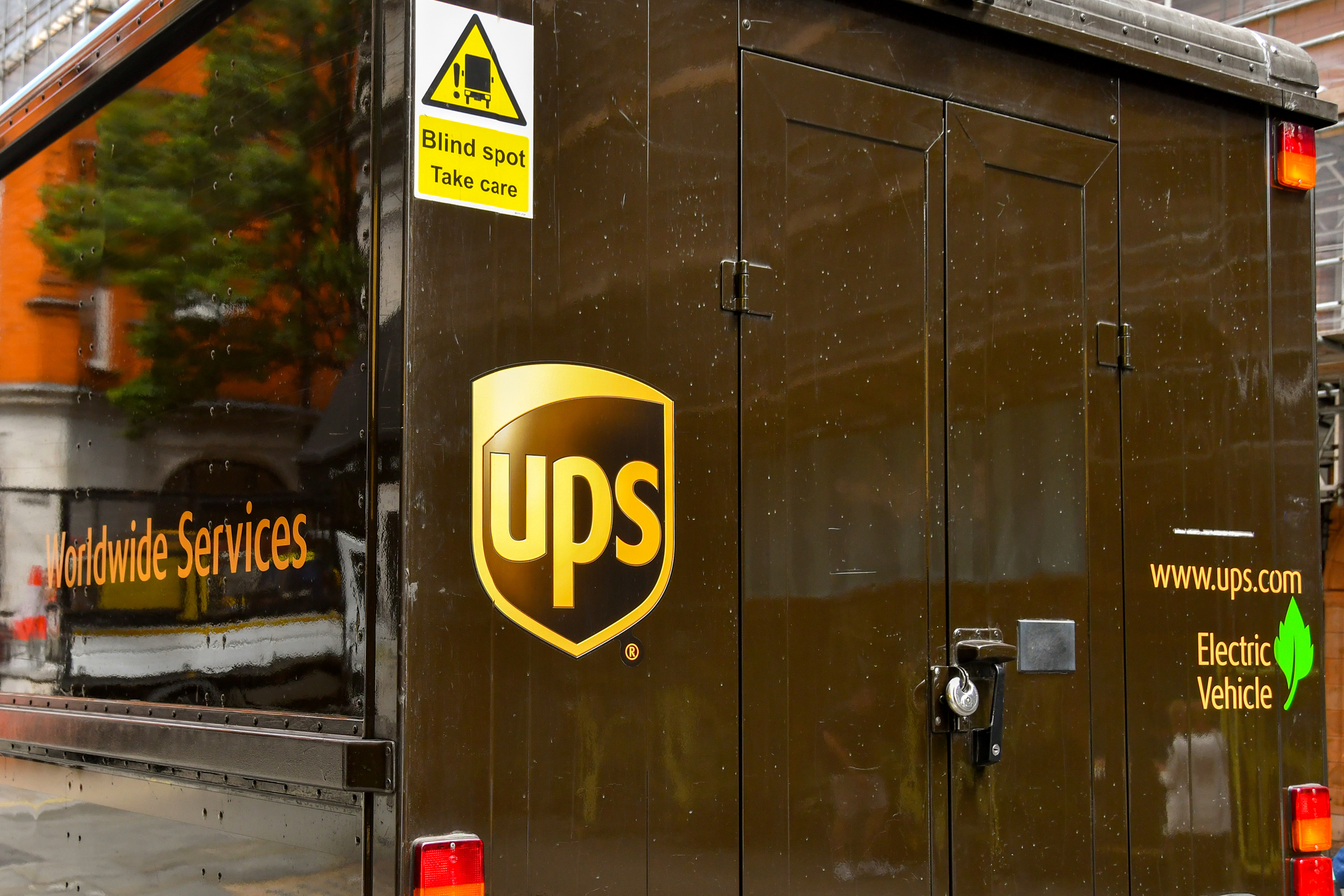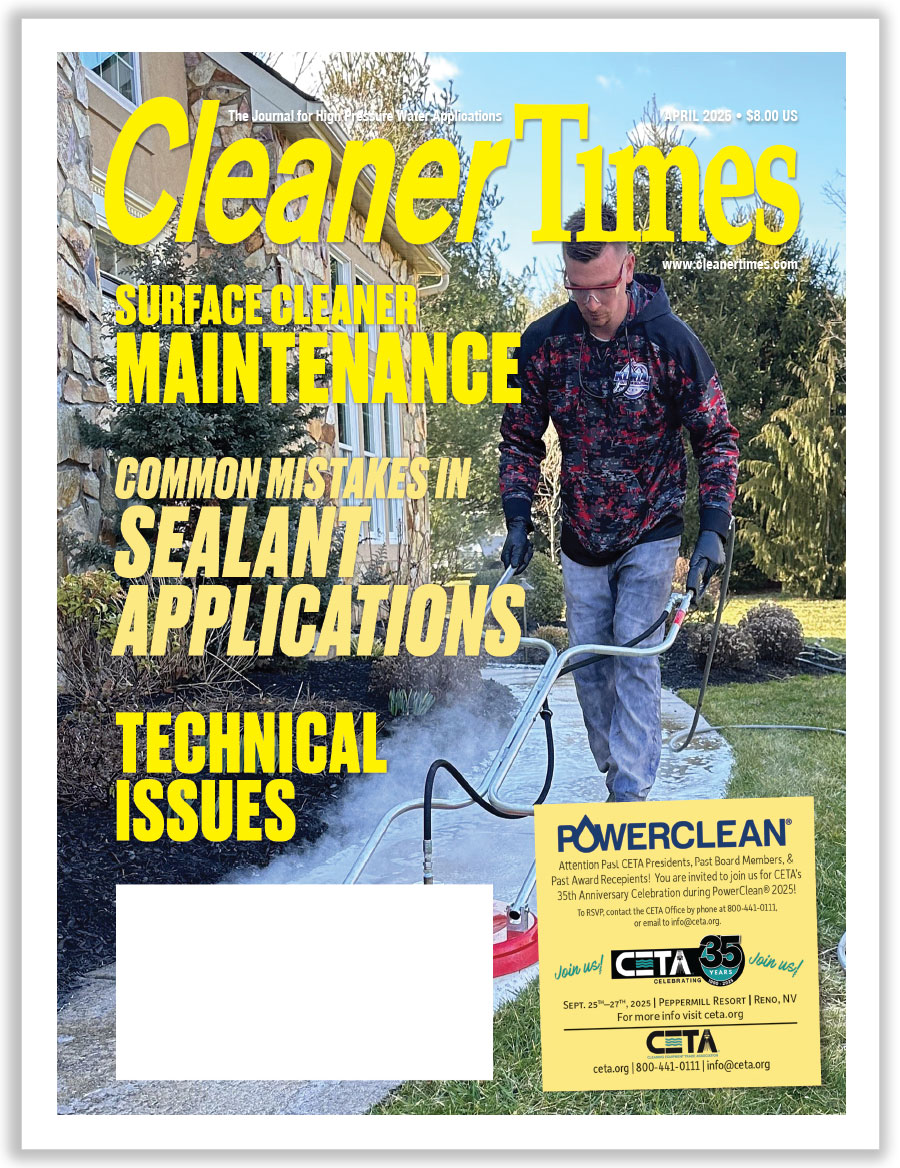
Funding Options for Transitioning Green
Written by Mark E. Battersby | Published October 2024
It’s no secret that many pressure cleaning operations are transitioning to electric or zero-emission vehicles. Cars, SUVs, vans, and box and semi-trucks—just about every commerical vehicle has an electric option.
But whether transitioning to an electric or zero-emission vehicle makes sense depends on a number of factors, especially cost and financing.
On the government front, the Bipartisan Infrastructure Law (BIL) and the Inflation Reduction Act (IRA) provided funding for vehicle electrification, particularly for medium- and heavy-duty trucks and charging infrastructure. But, it is the current tax breaks that provide most of the “going green” cost savings.
Tax Savings
Pressure washing businesses that purchase qualified commercial vehicles can claim a clean vehicle tax credit—a direct reduction of their tax bill rather than a deduction— thanks to the tax law’s 45W rules. The credit amount is the lesser of the following amounts:
• 15 percent of the vehicle purchase price for plug-in hybrid electric vehicles (PHEV)
• 30 percent of the vehicle purchase price for electrical vehicles (EVs) and fuel cell electric vehicles (FCEVs).
There is no limit on the number of credits a business can claim although the credits are nonrefundable, meaning they’re limited by the operation’s tax bill. For those amounts that can’t be claimed, the 45W tax credit can be carried over as a general business credit.
Partnerships and S corporations are required to file Form 8936, Clean Vehicle Credits, with all others reporting the credit on Form 3800, General Business Credit.
DON’T FORGET THAT INFRASTRUCTURE
Whether for one vehicle or the more than five vehicles the IRS labels as a “fleet,” improvements are necessary. Fortunately, many of those necessary improvements also qualify for a tax credit.
Expenditures for installing improvements, such as charging stations or refueling property, may be eligible for the Alternative Fuel Vehicle Refueling Property Tax Credit. The credit is allowed based on the placed-in-service date for the qualifying refueling property.
The tax credit for alternative fuel vehicle refueling property subject to depreciation equals six percent with a maximum of $100,000 for each single item of property. A pressure cleaning business meeting the prevailing wage and apprenticeship requirements may be eligible for a 30 percent tax credit with the same $100,000 limit.
Partnerships and S corporations use Form 8911, Alternative Fuel Vehicle Refueling Property Credit, to claim the credit. All others can report this credit on Form 3800, General Business Credit.
TAX WRITE-OFFS
While tax credits are the most direct way for pressure washers to reduce the cost of EV vehicles and charging equipment, the tax law’s potential cost reductions aren’t limited to tax credits.
Accelerated depreciation, such as Section 179 and bonus depreciation, allow pressure cleaning businesses to deduct the cost of an asset early on rather than depreciating it over a longer period of time. The tax law’s Section 179 allows an immediate expense deduction for those purchasing depreciable equipment rather than capitalizing and depreciating it over time.
Not only “green” vehicles qualify for the Section 179 write-off. Heavy SUVs, pickups, and vans used for business purposes and with a gross vehicle weight rating (GWR) of over 6,000 pounds and vehicles with no passenger seating such as cargo vans and box trucks qualify.
Bonus depreciation now allows pressure cleaning businesses to save more of the cost of all business assets immediately. Both Section 179 and the bonus depreciation (now down to 60 percent in 2024) that is usually taken after the Section 179 spending cap is reached allow a business to deduct more of the cost of assets when first purchased rather than depreciating them over a longer period of time.
OPTIONS, WE’VE GOT FUNDING OPTIONS
The upfront cost of transitioning to electric or zero-emission vehicles can be significant. While tax credits, firstyear expensing, and bonus depreciation write-offs can reduce the cost of transitioning, procuring the funding to purchase EV and zero-emission vehicles can be difficult. Fortunately, there are many ways to fund these expenses. Getting a loan is a good option for any pressure washer seeking to acquire EVs. With one of the increasing numbers of electric vehicle loans, an operation can buy and use a vehicle right away.
While an EV loan provides instant value, that value decreases over time. Although the interest paid on the loan is usually deductible and returns some of the amount paid for the vehicle or vehicles, it will still be worth less than the money put into it. Enter EV leasing.
EV leasing allows the pressure cleaning business to finance the vehicles needed with payment options such as a tax deduction for monthly payments. Leasing also facilitates getting newer equipment, usually under warranty.
Leasing today is an increasingly preferable option because it gives the business access to new or almost new vehicles for shorter periods. This helps reduce repair costs and keeps the EV in good shape.
On the downside, the pressure washer doesn’t own the vehicle while payments are being made. Once the lease ends there is, of course, usually an option to buy the EV or lease something newer and better.
The Search For Financing
The pressure washer’s first stop in the search for affordable funding should be its bank. Even without a personal relationship with the bank, it is familiar with the business, putting it one step ahead of other applicants. And, don’t forget that banks provide many services and can provide guidance to other funding resources. A line of credit, for example, is where a bank or other financial institution sets aside funds up to a certain credit limit that a business can borrow against as needed. Interest is paid only when funds are “drawn” from the line of credit while the lender charges only a minimal fee for keeping those funds available.
However, if a bank won’t lend the pressure cleaning business money, the good news is that there are other options. That’s when SBA loan guarantees come in.
While the SBA does not have a dedicated commercial vehicle loan program, most of this type of financing falls under the umbrella of equipment financing. The SBA’s most commonly used program for equipment financing is their 7(a) loan program.
Although often difficult to qualify for and tedious to find, SBA financing options can provide up to $5 million to purchase one vehicle or a fleet of vehicles. Borrowers get low interest rates and better terms.
Beyond The Bank
There are hundreds of specialist small business lenders that can help with fleet transition. While requirements, terms, and interest rates will vary widely, the large market projected for medium- and heavy-duty EVs has made these private companies that help fleets transition extremely competitive.
These companies can absorb the high upfront costs of procuring EVs— and charging infrastructure—to enable a fleet to transition without tying up its capital.
Some companies offer EV financing or leasing that helps a pressure cleaning business avoid the large capital outlays often required to transition a fleet. These costs can also be avoided by working with a fleet management company, an “electrification as-a-service” provider that can provide procurement costs as well as ongoing vehicle maintenance—even charging infrastructure—for a single fee.
Going Green Via The Internet
So-called funding “platforms” are an increasingly popular door to internet financing. With an online lender, bad credit is not always a barrier to getting the needed financing although it is often expensive. However, while these lenders put up fewer barriers, other drawbacks include significantly higher risks and lower loan amounts.
An often-overlooked internet option is peer-to-peer business lenders. These lenders eliminate the middleman, such as banks, to connect borrowers with individuals and institutional investors. Unfortunately, the cost of borrowing with peer-topeer financing can often be higher than more conventional financing.
Going Beyond
Tax credits and deductions can reduce the cost of taking advantage of technology advances and complying with increasing regulations. However, financing the transition remains key. When it comes to financing EVs or zero-emission vehicles (ZEVs), funding can take the following various forms:
• Loans with low or no interest offered by states
• Loan guarantees from federal and state programs
• Funding from public sources in the form of grants and credit vouchers to help offset the cost of electrification, both for vehicles and for the charging infrastructure
• Private partners such as those offering electric truck leasing or financing to help in avoiding the large capital outlays required to convert to an EV fleet
• Dealer financing. More and more dealers are entering the all-electric vehicle market in response to more business owners and fleet managers adding commercial electric vehicles to their fleets.
Transitioning to electrification or zero-emission vehicles and fleets can be costly. Fortunately, utilizing a mix of tax credits and deductions with traditional and non-traditional funding can help pressure washers successfully reduce costs and economically finance their transitions.
Starting the transition now will provide not only operating efficiencies but also customer and community goodwill, as well as allow the pressure cleaning operation to comply with current and proposed emission regulations. Of course, professional guidance can help.






